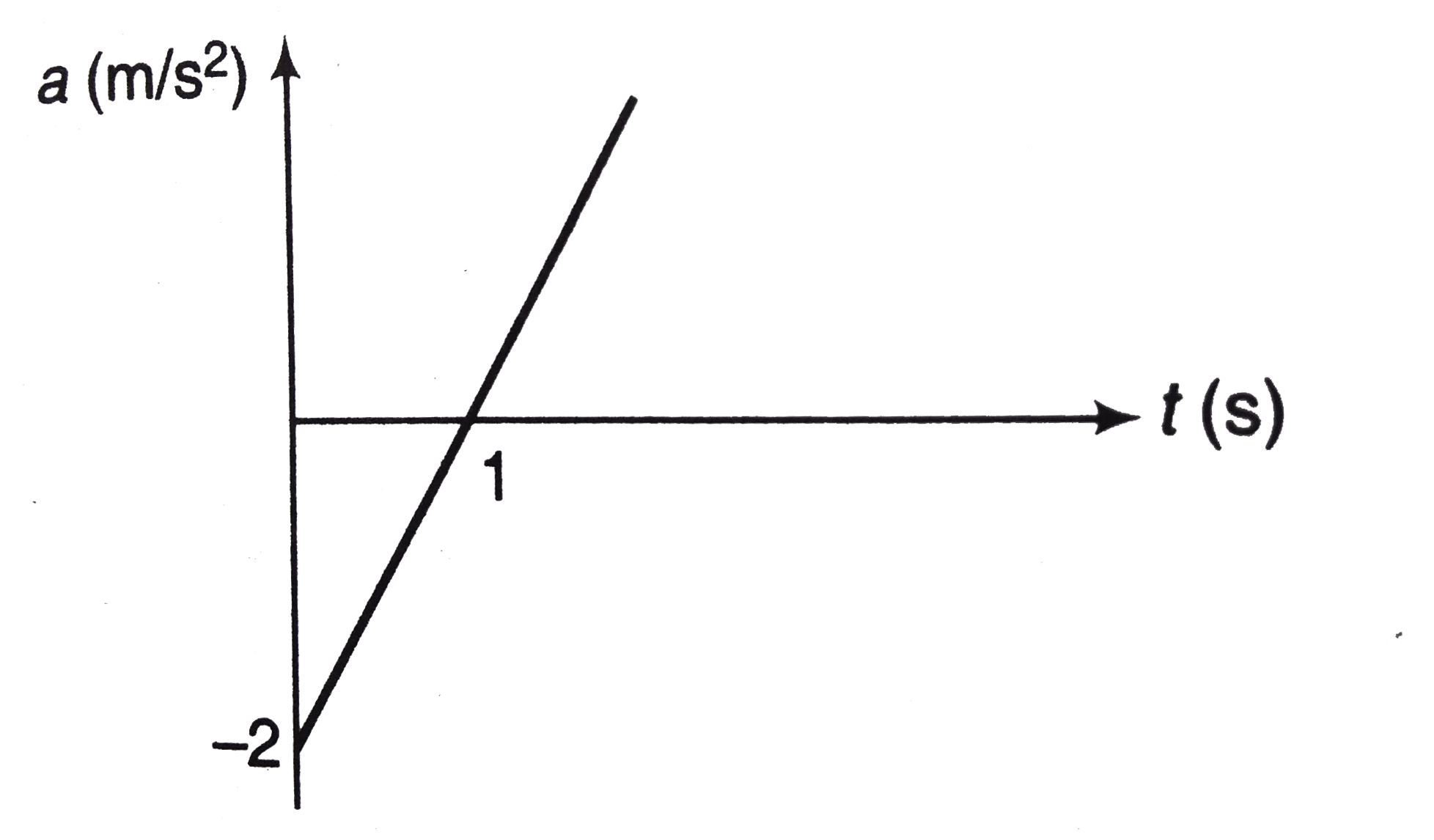The velocity of an object is changing with time and relation is given by the following equation.
v=2t+3t2
Calculate the position of the object from the origin at t = 2 s.
Assume particle to be at origin at t = 0
To solve the problem of finding the position of the object from the origin at t=2 seconds, given the velocity function v=2t+3t2, we will follow these steps:
Step 1: Understand the relationship between velocity and position
The velocity v is the derivative of the position x with respect to time t. Therefore, we can write:
v=dxdt
Given v=2t+3t2, we can substitute this into the equation:
dxdt=2t+3t2
Step 2: Rearrange the equation for integration
We can rearrange the equation to isolate dx:
dx=(2t+3t2)dt
Step 3: Integrate both sides
Now, we will integrate both sides. The left side will be integrated with respect to x from 0 to x, and the right side will be integrated with respect to t from 0 to t:
∫x0dx=∫t0(2t+3t2)dt
Step 4: Perform the integration
The left side integrates to:
x∣∣∣x0=x
For the right side:
∫(2t+3t2)dt=2⋅t22+3⋅t33=t2+t3
Thus, we evaluate this from 0 to t:
(t2+t3)t0=t2+t3−(0+0)=t2+t3
Step 5: Set the equations equal to each other
Now we have:
x=t2+t3
Step 6: Substitute t=2 seconds
Now we substitute t=2 into the equation to find the position x:
x=(22)+(23)=4+8=12
Conclusion
The position of the object from the origin at t=2 seconds is:
12 meters
The velocity v is the derivative of the position x with respect to time t. Therefore, we can write:
v=dxdt
Given v=2t+3t2, we can substitute this into the equation:
dxdt=2t+3t2
We can rearrange the equation to isolate dx:
dx=(2t+3t2)dt
Now, we will integrate both sides. The left side will be integrated with respect to x from 0 to x, and the right side will be integrated with respect to t from 0 to t:
∫x0dx=∫t0(2t+3t2)dt
The left side integrates to:
x∣∣∣x0=x
For the right side:
∫(2t+3t2)dt=2⋅t22+3⋅t33=t2+t3
Thus, we evaluate this from 0 to t:
(t2+t3)t0=t2+t3−(0+0)=t2+t3
Now we have:
x=t2+t3
Now we substitute t=2 into the equation to find the position x:
x=(22)+(23)=4+8=12
The position of the object from the origin at t=2 seconds is:
12 meters
Topper's Solved these Questions
- BOOK - AAKASH INSTITUTE ENGLISHCHAPTER - MOTION IN STRAIGHT LINEEXERCISE - Try Yourself40videos
MOTION IN STRAIGHT LINE
- BOOK - AAKASH INSTITUTE ENGLISHCHAPTER - MOTION IN STRAIGHT LINEEXERCISE - Assignment (SECTION - A)50videos
MOTION IN STRAIGHT LINE
- BOOK - AAKASH INSTITUTE ENGLISHCHAPTER - MOTION IN A STRAIGHT LINEEXERCISE - ASSIGNMENT (SECTION - D)15videos
MOTION IN A STRAIGHT LINE
- BOOK - AAKASH INSTITUTE ENGLISHCHAPTER - MOVING CHARGE AND MAGNESIUMEXERCISE - SECTION D16videos
MOVING CHARGE AND MAGNESIUM
Similar Questions
If the relation between acceleration and time for an object is given by
a=2t+4t2
Calculate the position of object from the origin at t = 4 s. Assume the object to be at rest at t=0.View SolutionThe displacement s of an object is given as a function of time t by the following equation s=2t+5t2+3t3. Calculate the instantaneous velocity of the object at t = 1 s.
View SolutionThe displacement x of an object is given as a function of time x=2t+3t2
Calculate the instantaneous velocity of the object at t = 2 sView SolutionThe velocity of an object is given by →v=(6t3ˆi+t2ˆj)m/s . Find the acceleration at t = 2s.
View SolutionThe displacement s of an object is given as a function of time t
s=5t2+9t
Calculate the instantaneous velocity of object at t = 0.View SolutionA particle is moving with speed v=b√x along positive x-axis. Calculate the speed of the particle at time t=τ (assume tha the particle is at origin at t= 0).
View SolutionThe velocity of an object is given by →v=(6t3ˆi+t2ˆj)m/s) . Find the acceleration at t = 2s.
View SolutionThe displacement x of an object is given as a funstion of time, x=2t+3t2. The instantaneous velocity of the object at t = 2 s is
View SolutionThe acceleration of particle varies with time as shown.

(a) Find an expression for velocity in terms of t.
(b) Calculate the displacement of the particle in the interval from t=2s to t=4s. Assume that v=0 at t=0.View SolutionThe relation between the acceleration and time for an object is given below. Calculate the velocity with which the object is moving at t = 1 s.
a=3t−4t2View Solution

